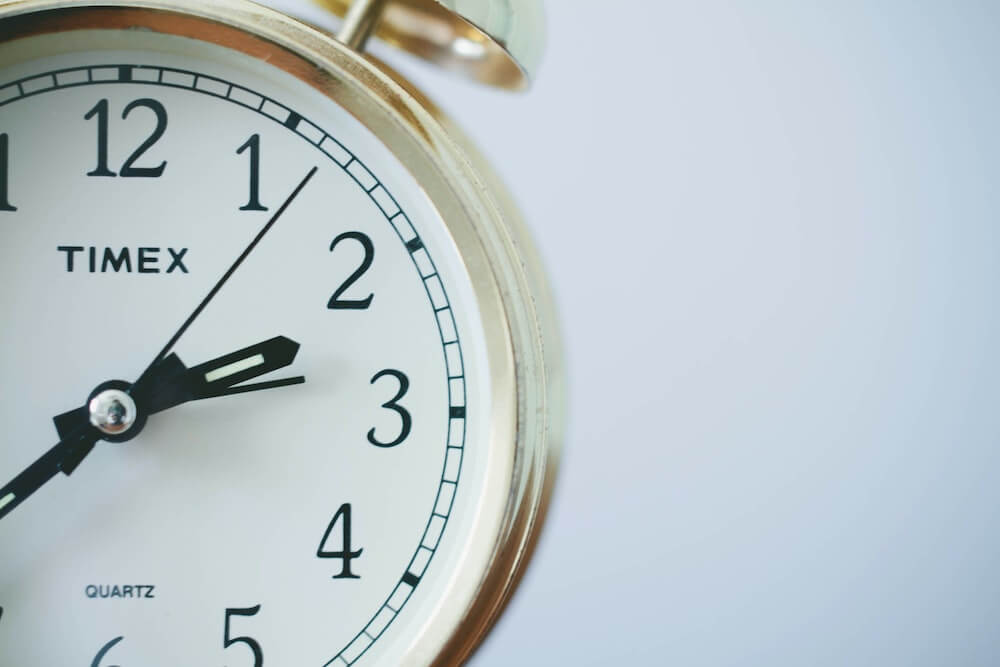This Sunday, March 14, Daylight Saving Time (DST) begins for most of the United States.
It’s a welcome time for many in Buffalo because we’ve been longing for more daylight all winter, and later sunsets help keep us from curling up and going right to sleep after work. But those who wake up early, such as farmers, teachers and students, may dread the dark early mornings DST brings on.
Of course, in order to switch to DST, we need to “spring forward,” which is what we’ll do on Sunday at 2:00 a.m. At that time, we’ll move the clocks ahead one hour to 3:00 a.m., which means we’ll “lose” an hour of sleep that night. We’ll get that hour back when we “fall back” and switch the clocks backward an hour this fall.

But outside of getting the benefit of later sunsets, why do we do this? And is it actually healthy, safe and productive?
It’s been a hot topic in recent years, and many countries, as well as certain states and territories, have even opted not to use DST at all.
Others, however, believe we should make DST permanent — including many U.S. Senators, who recently introduced a bill to make it last all year long to maximize evening sunlight.
Read on to learn more about the history of DST, as well as how you can best adjust to the change after we “spring forward” on March 14.
Where is Daylight Saving Time Used?
Most areas in Europe and North America observe DST, whereas most areas of Africa and Asia do not. Many South and Central American countries close to the equator also neglect to practice daylight saving because they have generally the same number of daylight hours throughout all parts of the year.
According to Readers’ Digest, approximately 70 countries utilize DST in at least a portion of the country. In the United States, Arizona (besides the Navajo Nation) and Hawaii do not use DST. In addition, US territories Puerto Rico and the Northern Mariana Islands, as well as the U.S. Virgin Islands, American Samoa and Guam do not use it.
Where Did DST Come From?
According to WGRZ, the idea to move to DST was introduced by American founding father Benjamin Franklin in 1784. While working in Paris as an ambassador to the U.S., he wrote an essay titled “An Economical Project” and submitted it to the editor of the Journal de Paris. Franklin observed that Parisians slept through many hours of daylight in the summer (starting as early as 4:00 a.m), only to have to use candles at night once the sun had gone down. Franklin argued that they would save a lot of money on candles if they woke up at the time of sunrise and went to bed closer to sunset.
But it wasn’t until 1916, two years into World War I, that a temporary DST was first implemented by Germany. The country decided to turn every clock in the country one hour ahead in order to minimize the use of artificial lighting so that fuel could be saved for the war. Soon after, other European countries, including France and the United Kingdom, started using DST as well.
The U.S.’s Adoption of Daylight Saving Time
According to The Incline, the idea was not introduced to the U.S. until 1917, when Robert Garland of Pittsburgh presented the idea to Congress after visiting the U.K. The idea was signed into law by Woodrow Wilson and first observed in March 1918. Garland is considered the “father of daylight saving time.”
The main motivation for the DST law was industrial productivity and the conservation of wartime resources like fuel and electricity. The law was repealed in 1919 due to pushback from farmers and the agricultural industry, but was brought back by President Franklin D. Roosevelt for similar reasons as the U.S. entered World War II.
According to WGRZ, from the end of WWII in 1945 up until 1966, there was no uniformity in the use of DST across the country, which created much confusion. Some major cities, such as New York and Chicago, decided to keep DST while others went back to a permanent standard time after the war. This created a system that Time magazine described in 1963 as “a chaos of clocks,” according to History.com.
However, most of the confusion was alleviated when the Uniform Time Act was implemented by the U.S. Department of Transportation in 1966. This Act mandated the official start and end dates of DST in the country as March and November and divided the country into different time zones. At this point, Arizona and Hawaii, as well as a few counties opted out, but the vast majority of the country adopted DST and have continued using it to this day.
The Daylight Saving Time Debate
While DST may have been useful when resources were scarce and needed to be put toward war efforts, many have argued that it’s no longer necessary today and actually has a negative impact on people’s health and well-being.
According to Healthline, in the week following the start of DST (which would be the week of March 15 this year), fatal car crashes increase by 6 percent. This increase is attributed to the sleep deprivation that results from the “spring ahead” clock shift forward early Sunday morning. This creates a “jet lag” type effect that extends into the following work week.
The time switch has also been linked to workplace injuries, sleep disturbances, stroke, and heart attack. And many studies have suggested there’s not much benefit when it comes to energy savings anymore, especially with the widespread shift to electrical power since the World Wars.
The Campaign For Year-Round Daylight Saving
One way to offset the negative effects is to make DST permanent, so there’s no need to adjust clocks and lose or gain an hour in the spring and fall. Florida, Alabama, and Washington are considering making DST permanent in order to prevent these hazards. But politicians say that state legislation cannot go into effect until there is a change in the federal statute.
To combat this challenge, a bipartisan group of U.S. Senators this week introduced a bill called the “Sunshine Protection Act of 2021,” which would make DST permanent all year round. This would eliminate the need for the clock to “spring forward” and “fall back,” which politicians say would decrease the disruption and negative effects associated with losing an hour of sleep on the “spring forward.”
And later sunsets allow people (and particularly children) to engage in physical activity for a longer period after work or school, thus decreasing the risk of obesity. Studies show that children increase their physical activity during DST, and the Journal of Environmental Psychology found that DST increased pedestrian activity by 62% and cyclist activity by 38%.
Furthermore, the American Journal of Public Health and the Journal of Safety Research backs up the assertion that making DST permanent would reduce car crashes. Their study found that it would reduce car crashes and pedestrian accidents, since daylight hours would better align with drivers’ standard work hours and therefore help increase visibility for drivers and walkers.
Tips For Avoiding The “Spring Forward” Crash
We don’t know for certain whether DST will remain permanent, but it’s certainly an interesting proposal that could have economic and health benefits.
Unfortunately, as of right now, we still have to deal with the “spring forward” shift and lose an hour this weekend. If federal law changes, however, it’s possible that this could be the last time we have to make such a shift.
Luckily, there are steps you can take to make the shift less damaging and dramatic. While there’s not much time to drastically change your sleep schedule before the change, going to sleep even 20-30 minutes earlier these next few nights will make a difference in how you feel afterwards. And once the clocks spring forward, continue to prioritize sleep and maintain a consistent schedule.
Other good tips for adjusting to the time change include:
- Eating a healthy diet with lots of fruit and vegetables
- Minimizing exposure to light before bedtime
- Avoiding heavy meals and caffeine late in the day
- Avoiding alcohol
- Getting outside for some sunlight to help maintain circadian rhythms
- Exercising for at least 30 minutes per day
All of these tips will be beneficial to follow prior to the time change as well as the week after. If you can, plan to schedule in a few short naps for next week in case you’re feeling groggy.
Do you think DST should remain permanent, go away completely or stay in effect for just part of the year? Let us know in the comments below.

 Fair Housing Notice
Fair Housing Notice 